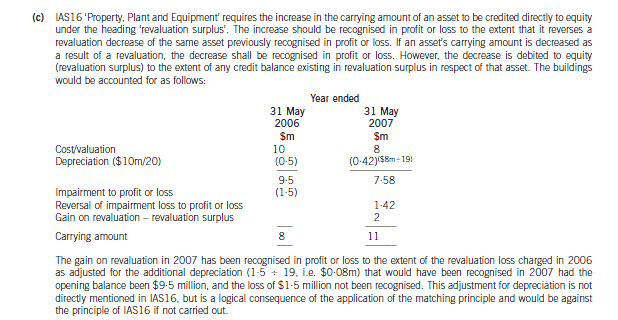在内蒙古,ACCA考试通过了你不这样做你还是不能拿到证书
发布时间:2020-01-08
近些年,随着各式各样的考试风靡全国以来,ACCA证书也是从众多资格证书里脱颖而出,逐渐映入大众的眼帘。了解它的人称之为“金饭碗”,那么有些通过所以ACCA考试全部科目的小伙伴就来咨询51题库考试学习网,成绩通过之后,证书是怎么样领取呢?是等待官方邮寄过来?还是自己去申请领证呢?这些疑问51题库考试学习网会为大家逐一解决,请大家耐心地往下看哟~
首先要恭喜你成为了ACCA准会员了,当你通过14门ACCA考试的那一科开始,你就成为准会员了。但是需要注意的是从准会员并不是会员,想从准会员到ACCA会员,这些事情你必须要做:
1.ACCA每年2月份和8月份会分别公布12月份和6月份的考试成绩。每一个通过ACCA全部考试的学员随后会收到ACCA英国总部邮寄的《ACCA会员或准会员申请手册》(一般收到时间是3月初和9月初)。每人必须根据自身的情况,如是否满足ACCA相关工作经验要求,向ACCA英国申请成为会员或准会员。
2.ACCA总部收到学员申请后,不论是申请会员和准会员,都会给学员颁发ACCA准会员证书,以确认学员成功通过所有考试。
3.对于申请会员的学员,要求如实填写会员申请手册,并总结平时记录的STR(Student Training Record)中的主要工作经历和取得的工作能力,填入申请手册(在递交会员申请表时,可以暂时不提交STR,但是,一旦ACCA英国总部通知需要提交STR,以便了解更详细的信息完成评估,学员需要再补交STR)。ACCA英国总部会对学员所填的工作记录进行评估和并与其监督人联系进行核查,确认无误后,则批准其成为ACCA会员,一般这个过程需要两个月的时间。
4.如果学员在规定的时间内没有收到以上申请手册,可以直接登陆ACCA全球官网下载。
5.对于暂时未满足工作经验的准会员,可以在条件满足的任何时间向ACCA递交ACCA会员申请表。
完成了以上所有步骤之后,你就算是成功申请ACCA会员了,只需要等待官方发送证书即可。
都说,阳光总在风雨后,当你拿到通过自己努力获得的证书时,那份喜悦肯定是独一无二的,那一刻你也明白了自己的努力是值得的;所以,为了那一天的到来,各位ACCAer们加油复习,早日完成目标~
下面小编为大家准备了 ACCA考试 的相关考题,供大家学习参考。
(c) Wader is reviewing the accounting treatment of its buildings. The company uses the ‘revaluation model’ for its
buildings. The buildings had originally cost $10 million on 1 June 2005 and had a useful economic life of
20 years. They are being depreciated on a straight line basis to a nil residual value. The buildings were revalued
downwards on 31 May 2006 to $8 million which was the buildings’ recoverable amount. At 31 May 2007 the
value of the buildings had risen to $11 million which is to be included in the financial statements. The company
is unsure how to treat the above events. (7 marks)
Required:
Discuss the accounting treatments of the above items in the financial statements for the year ended 31 May
2007.
Note: a discount rate of 5% should be used where necessary. Candidates should show suitable calculations where
necessary.

(ii) Describe the claim of each of the four identified stakeholders. (4 marks)
(ii) Stakeholder claims
Four external stakeholders in the case and their claims are as follows.
The client, i.e. the government of the East Asian country. This stakeholder wants the project completed to budget and
on time. It may also be concerned to minimise negative publicity in respect of the construction of the dam and the
possible negative environmental consequences.
Stop-the-dam, the vocal and well organised pressure group. This stakeholder wants the project stopped completely,
seemingly and slightly paradoxically, for environmental and social footprint reasons.
First Nation, the indigenous people group currently resident on the land behind the dam that would be flooded after its
construction. This stakeholder also wants the project stopped so they can continue to live on and farm the land.
The banks (identified as a single group). These seem happy to lend to the project and will want it to proceed so they
make a return on their loans commensurate with the risk of the loan. They do not want to be publicly identified as being
associated with the Giant Dam Project.
Shareholders. The shareholders have the right to have their investment in the company managed in such a way as to
maximise the value of their shareholding. The shareholders seek projects providing positive NPVs within the normal
constraints of sound risk management.
Tutorial note: only four stakeholders need to be identified. Marks will be given for up to four relevant stakeholders
only.
2 (a) Explain the term ‘backflush accounting’ and the circumstances in which its use would be appropriate.
(6 marks)
(a) Backflush accounting focuses upon output of an organisation and then works backwards when allocating costs between cost
of goods sold and inventories. It can be argued that backflush accounting simplifies costing since it ignores both labour
variances and work-in-progress. Whilst in a perfect just-in-time environment there would be no work-in-progress at all, there
will in practice be a small amount of work-in-progress in the system at any point in time. This amount, however, is likely to
be negligible in quantity and therefore not significant in terms of value. Thus, a backflush accounting system simplifies the
accounting records by avoiding the need to follow the movement of materials and work-in-progress through the manufacturing
process within the organisation.
The backflush accounting system is likely to involve the maintenance of a raw materials and work-in–progress account
together with a finished goods account. The use of standard costs and variances is likely to be incorporated into the
accounting entries. Transfers from raw materials and work-in-progress account to finished goods (or cost of sales) will probably
be made at standard cost. The difference between the actual inputs and the standard charges from the raw materials and
work-in-progress account will be recorded as a residual variance, which will be recorded in the profit and loss account. Thus,
it is essential that standard costs are a good surrogate for actual costs if large variances are to be avoided. Backflush
accounting is ideally suited to a just-in-time philosophy and is employed where the overall cycle time is relatively short and
inventory levels are low. Naturally, management will still be eager to ascertain the cause of any variances that arise from the
inefficient usage of materials, labour and overhead. However investigations are far more likely to be undertaken using nonfinancial
performance indicators as opposed to detailed cost variances.
声明:本文内容由互联网用户自发贡献自行上传,本网站不拥有所有权,未作人工编辑处理,也不承担相关法律责任。如果您发现有涉嫌版权的内容,欢迎发送邮件至:contact@51tk.com 进行举报,并提供相关证据,工作人员会在5个工作日内联系你,一经查实,本站将立刻删除涉嫌侵权内容。
- 2020-01-08
- 2020-02-29
- 2020-09-04
- 2019-07-20
- 2019-07-20
- 2019-07-20
- 2019-07-20
- 2020-01-08
- 2020-02-29
- 2020-01-08
- 2019-07-20
- 2019-07-20
- 2020-01-08
- 2020-01-08
- 2020-02-29
- 2019-07-20
- 2019-07-20
- 2019-07-20
- 2020-01-08
- 2020-03-04
- 2020-09-04
- 2021-02-25
- 2020-02-29
- 2019-07-20
- 2019-07-20
- 2020-01-08
- 2020-02-29
- 2019-07-20
- 2019-07-20
- 2020-01-02